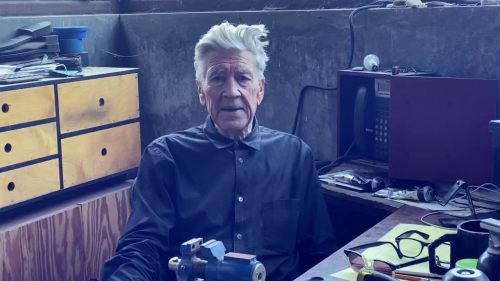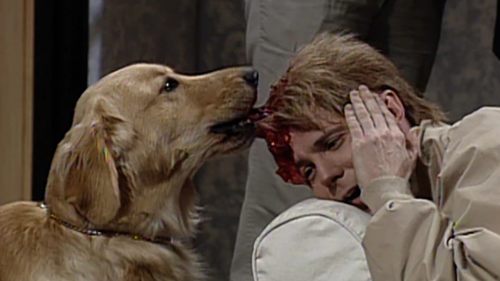Is TWIN PEAKS: THE RETURN Television, Or Is It A Film?
2016 was the year OJ Simpson became the focus of not one, but two of the best pieces of filmed entertainment the year had to offer. The first was an FX mini-series: Ryan Murphy’s American Crime Story melodramatizing of The People v. OJ Simpson. The second was Ezra Edelman’s eight-hour doc OJ: Made in America, which expertly utilized the rise and fall story of the Heisman Trophy winner as a jumping off point to examine the tumultuous state of race relations in the United States. The latter is a monumental piece of cinema; rightfully winning the Academy Award for Best Documentary Feature, despite numerous criticisms that it was, in fact, also a TV mini-series.
Let’s be clear up front: whether you classify a movie as ‘film’ or ‘television’ doesn’t matter in the grand scheme of discussing media. What truly matters is how engaging you found the piece of art you’re attempting to categorize. These types of conversations usually occur between critics and cinephiles who, at year’s end, are attempting to justify their placement of a certain film (or television program) on their ‘Best Of’ List. However, Made in America was a special case. Edelman’s sprawling, humanistic work was nominated for an Oscar, even though the ESPN Network funded and aired it in five ninety-minute episodes, giving the audience days to digest each segment before picking up with the next. The doc also played at film festivals, including Sundance and Tribeca (though both institutions used ‘mini-series’ in their respective screening descriptions) and ran in theaters for a brief stint (including the Drafthouse), qualifying it for the aforementioned gold bald guy, before being released on Blu-ray in a second ‘Theatrical’ Edition.
Made in America is another recent example of how our current media landscape is repackaging movies for audiences who (more than likely) would never head out to see an eight-hour documentary about anything. 2017’s most heated filmic debate (thus far) revolves around the emergence of Netflix as a premiere original programmer, who’ve added tiny indie and multimillion-dollar motion pictures to their slate of zeitgeist-grabbing original series. Some believe that the global streaming service (who keep much of their viewership data a mystery) is harming cinema, devaluing the pictures they fund or purchase by “burying” them via an absence of advertising. At this year’s Cannes Film Festival, jury president Pedro Almodóvar stated that he couldn’t perceive the Palm d’Or being given to a film that is “then not seen on the big screen.” Shortly thereafter, Bong Joon-ho’s Okja (which was in competition for the fest’s top prize) was jeered when the Netflix logo greeted audiences with its trademark da-dum.
Nevertheless, many creatives enjoy the platform Netflix is giving their personal visions, acknowledging the fact that their movies don’t get a hefty marketing push, but will instead sit on a digital shelf for eternity, waiting for Joe Blow to scroll through one afternoon and land on microbudget comedies like Michael Stephenson’s Girlfriend’s Day or Joe Swanberg’s Win It All. The perception often is (speaking as a writer who’s had discussions regarding Netflix’s role as a distributor) finding an audience for a film is usually just as difficult as getting it made, so why not let a service with nearly one hundred million subscribers place it in their virtual aisles? The way we consume cinema is evolving with technology, and filmmakers are riding these sea change waves the best they can.
Now comes Twin Peaks: The Return which, on the surface, doesn’t seem to fit into this conversation. But once you do a little digging into the road David Lynch and Mark Frost took in getting their eighteen-hour absurd epic to living rooms across the country, the line between mediums becomes just as blurry. For starters, the original script was reportedly written as one four hundred-plus page document, that was then shot and segmented into hours. There was no “series bible” or individual teleplays. The Return was written as a single intimidating tome, that Mark Frost has even jokingly compared to the Manhattan Phone Book. When asked how they’d prefer reviewers approach the unwieldly tale, the two mad geniuses requested that each hour not be referred to as “Episodes”, but rather “Parts”. While this might seem like pretentious semantics, it recalls Lynch’s past distaste for newfangled forms of viewing (his anti-cell phone viewing screed is still a classic of the genre) and the lack of chapters on the original Mulholland Drive DVD. The Return may be longer than Berlin Alexanderplatz, but it’s still meant to be viewed as a whole, and on screens larger than the one that fits in your pocket.
The visual language of The Return further illustrates just how radical this project is for the Showtime Network. While “auteurist television” has become all the rage following the first season of True Detective (though one could make the argument its existed for as long as the Exec. Producer credit has), Twin Peaks takes that notion to the next level by delivering an hour of “pure heroin” David Lynch each week. Scenes are shot in static masters, while the janky DV and digital SFX recall the crass experimentation he performed on his last feature, Inland Empire. Beats are drawn out in editing, rejecting the shot-reverse-shot formalism most televised entertainment employs. There’s no denying Lynch has re-emerged to yet again prove that he is the only one who can create true “Lynchian” art, but his defined cinematic vocabulary threw this writer during the first few hours of The Return. It looked like nothing we’d ever seen on television, but everything we’d ever seen Lynch create. So why the hell weren’t we watching this in a theater, with a bowl of buttered popcorn (or cup of hot joe) keeping us company?
Twin Peaks coming back to television is only logical (both in terms of length and brand recognition), but Lynch and Frost seem to be using the format as fertile ground to plant new creative seeds rather than deliver a fan servicey retread of the original series’ surrealist take on Peyton Place. Lynch stated before the season began that the cult horror movie prequel Fire Walk With Me was key to understanding The Return. But that clue seems to be (as this writer predicted not too long ago) more of a statement regarding intent rather than actual storytelling focus. Where Twin Peaks is the horror movie rejection of the series’ quirky sense of self, The Return busts open what we’ve come to think of Twin Peaks by taking place almost entirely outside its Washington namesake. During the first six hours, Lynch and Frost are jumping all over the United States, daring the audience to keep up as they weave one body-hopping plot thread into another – travleing from South Dakota to Las Vegas to Arlington, Virginia to New York City. By the time each Part has reached its conclusion, we’re back in the Bang Bang Bar, catching our collective breath as a new band plays us off. It’s as exhausting as it is thrilling.
To reiterate – whatever we end up labeling The Return doesn’t matter outside of pedantic nerd debate. We’re experiencing something truly special, as one of American cinema’s finest directors is pushing the boundaries of both mediums simultaneously. When this new round of Twin Peaks began, the veil of mystery Lynch and Frost hung over the entire production kept everyone guessing until we were all gathered around our personal glass boxes, transfixed and anxiously awaiting whatever they deemed fit to unleash. There will be those who become staunch partisans in this debate, searching for any evidence to justify their respective positions. Yet in the end, we’re all receiving a gift that’s been pent up in the minds of its creators for twenty-five-plus years. Call it a film. Call it television. Call it a revolution. The way we watch has been altered yet again, and we’re all the better off because of it.



